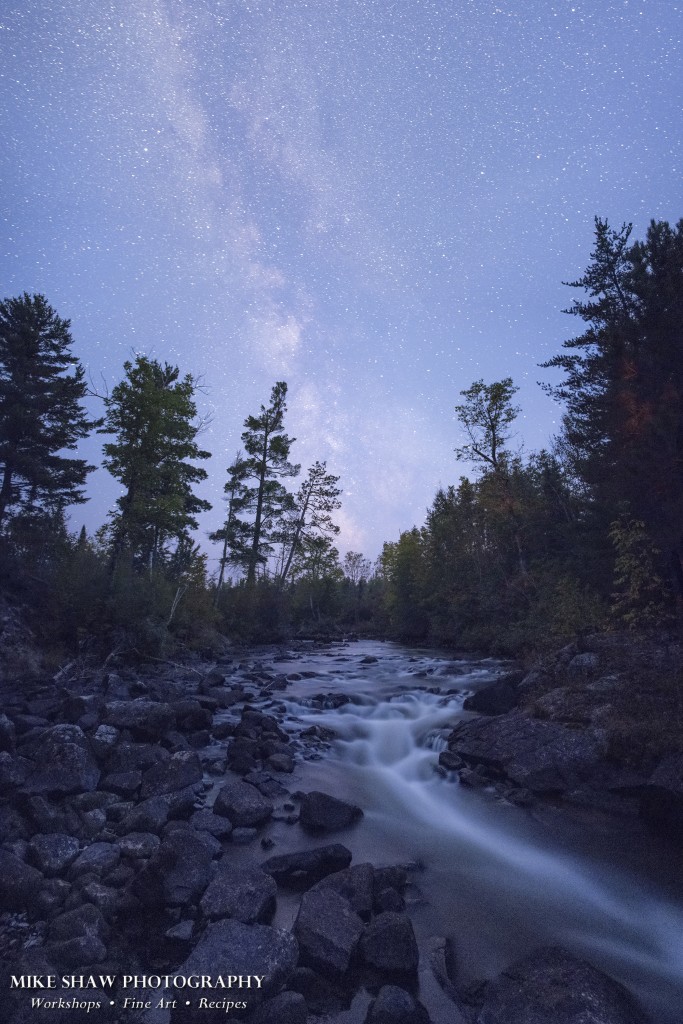The remote reaches of the Boundary Waters Canoe Area and Wilderness (BWCAW) in northern Minnesota have some of the darkest night skies in the continental United States. These are perfect conditions for viewing the Milky Way right down to the horizon, as seen in this image. In populated areas, much detail is usually lost to light pollution. Coupling the Milky Way with a carefully selected foreground object gives tons of options for creating memorable images. Since the best views are during the summer, now’s the time to start planning. Here’s how to make this shot!
During the day, select your foreground to align with the Milky Way’s position after nightfall. PhotoPills and The Photographer’s Ephemeris are great apps to use to find out how to do this. Mark the position with a small pile of rocks, crossed twigs or some other object that will stay in place until night. Next, set your camera’s focus on Manual and pre-focus on a distant object on the horizon. Use gaffer’s tape to hold this focus in place for the evening.

At night, return to your location and set up your gear. Securely lock down your camera, being careful not to disturb the focus. Begin exposing, adjusting the composition and exposure as-needed. Recommended settings are:
- ISO 3200 – 12,800
- Aperture – f/4.5, f/2.8 or similar – basically as wide open as possible
- White balance – 4750K is a good place to start.
- 15 seconds shutter speed to start – adjust as necessary
Monitor the histogram, keeping the exposure as far to the right as possible without star-streaking, generally in line with the Rule of 500 – simply divide the number 500 by the focal length of the lens in mm and this will be the maximum recommended shutter speed in seconds.
Other equipment you may find useful includes a headlamp, preferably with red light, or red plastic taped over a white light; a compass, cable release, focusing loupe and a comfortable chair.
And if you’d like to learn how to easily create images like this yourself, come join us on our new Night Photography course!
– BPSOP Instructor Mike Shaw
Mike Teaches: Star Trails & Night Photography










